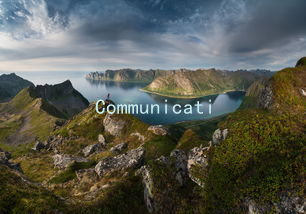Expressing Affection: The Power of Body Language in Romance
Expressing Affection: The Power of Body Language in Romance
In the realm of romance, the spoken word often takes center stage, but the subtle cues of body language can speak volumes. Understanding and effectively using body language can enhance communication and deepen connections in a relationship. From the initial stages of dating to long-term partnerships, body language plays a crucial role in expressing affection and building intimacy.
One of the most powerful aspects of body language is physical touch. Simple gestures, such as holding hands, a gentle touch on the arm, or a warm embrace, can convey feelings of love and care without the need for verbal expression. These acts create a sense of closeness and safety, allowing partners to feel more connected to one another. Research has shown that touch releases oxytocin, commonly known as the love hormone, which fosters bonding and reduces stress.
Eye contact is another vital element in the language of love. When two people maintain eye contact during a conversation, it demonstrates interest, attentiveness, and emotional engagement. It allows partners to connect on a deeper level, fostering intimacy and understanding. Prolonged eye contact can evoke feelings of attraction and affection, making the other person feel valued and appreciated. However, it is essential to strike a balance; too much can feel intense or invasive, while too little can indicate disinterest or insecurity.
Mirroring is a subtle yet effective way to enhance rapport. When one person unconsciously mimics the body language of their partner—such as posture, gestures, or facial expressions—it creates a sense of harmony and connection. This behavior signals empathy and understanding, making both individuals feel more aligned and connected in their interaction.

Facial expressions are key in conveying emotions. A warm smile can light up a person’s face and communicate joy and affection. Similarly, raised eyebrows can indicate surprise or excitement, contributing to a playful atmosphere. Conversely, frowning or lack of expressiveness can send the message of disinterest or negativity, which may hinder the growth of a romantic relationship. It is essential to be conscious of your facial cues and ensure they align with the feelings you wish to express.
Proximity also plays a significant role in romantic body language. The distance that couples maintain can tell a story about their level of comfort and connection. Standing or sitting close together indicates a desire for intimacy, while maintaining physical distance may suggest discomfort or a lack of interest. As relationships progress, partners often naturally shorten this distance, reflecting the growing bond and trust between them.
Lastly, posture is an indicator of openness and confidence. Leaning slightly towards your partner, uncrossing your arms, and maintaining an open stance can communicate that you are engaged and receptive. In contrast, closed-off postures can create barriers, making it difficult to foster closeness and understanding. Being mindful of your body language not only helps you communicate your feelings more effectively but also encourages your partner to reciprocate.
In conclusion, while words are undoubtedly important in expressing affection, body language often carries more weight than we realize. By harnessing the power of physical touch, eye contact, mirroring, facial expressions, proximity, and posture, couples can foster deeper connections and enhance their romantic relationships. Paying attention to these non-verbal cues can help navigate the complexities of love and create a lasting bond built on understanding, trust, and intimacy. Remember, sometimes the most powerful expressions of affection are found not in what we say, but in how we feel and how we choose to share that feeling with the world.





